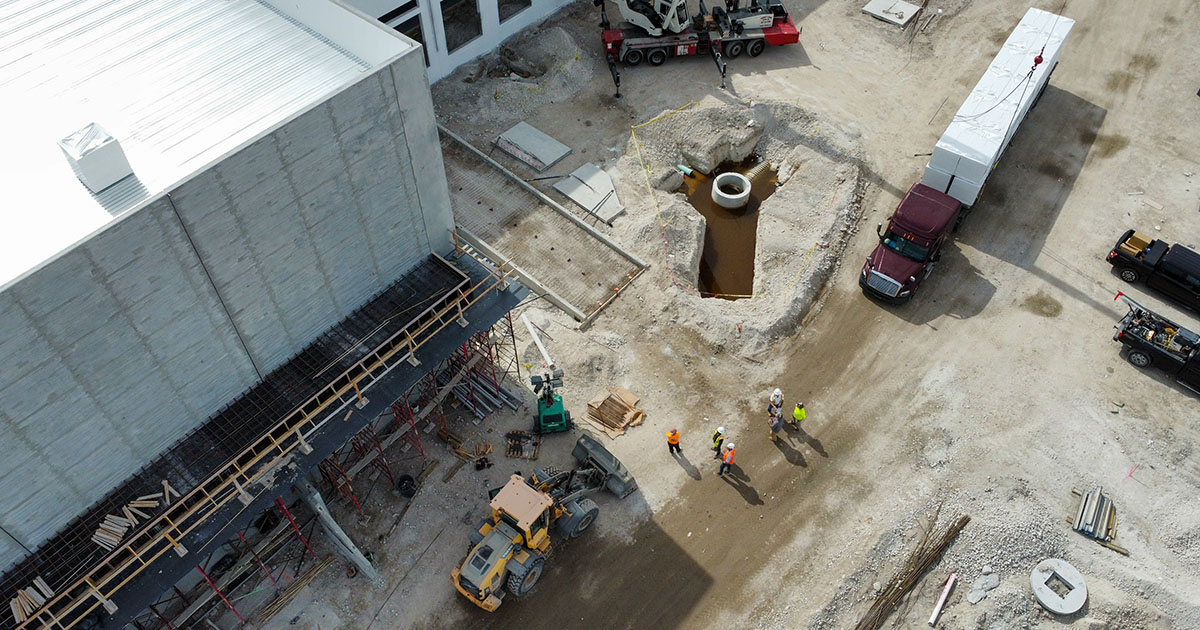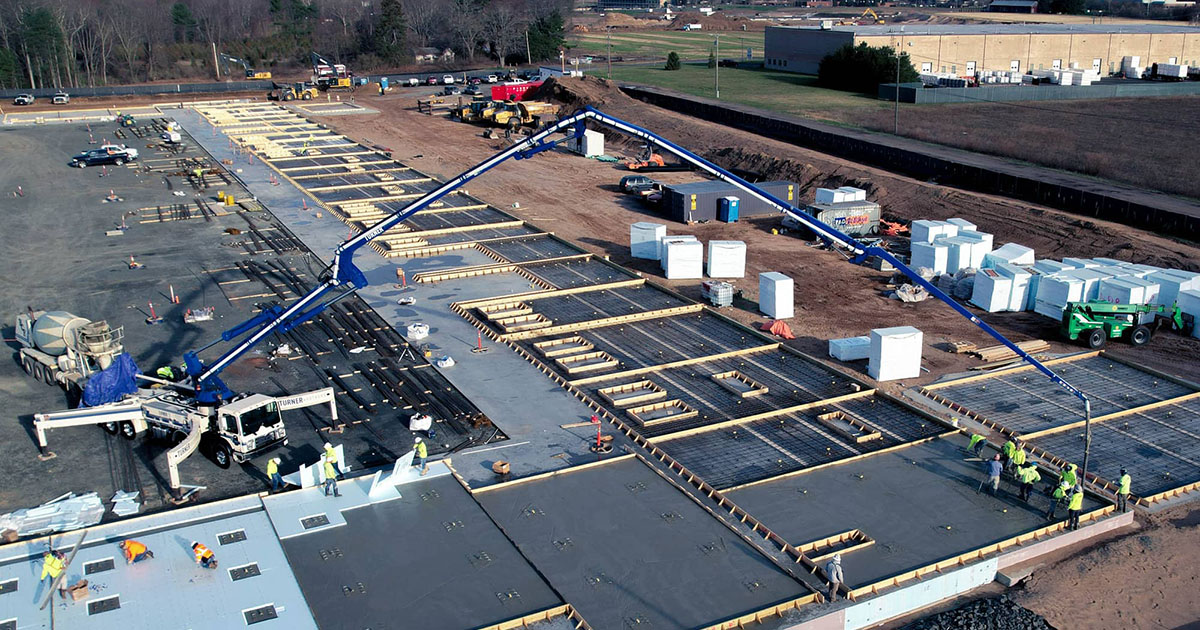
SEO Audit for Construction Businesses: Improve Your Online Presence
In today’s digital world, construction businesses need a strong online presence to stand out in a competitive industry. Potential clients and partners often start their search online, looking for contractors, builders, or specialists who can deliver quality work. That’s why a SEO audit for construction businesses is essential. An SEO audit helps you assess your website’s performance, optimize it for search engines, and attract more qualified leads to your services.
This guide walks you through the importance of an SEO audit, what it involves, and actionable steps to make your construction website more visible to potential clients.
Why an SEO Audit is Crucial for Construction Businesses
An SEO audit gives you a comprehensive overview of your website’s strengths and areas for improvement. For construction companies, this is particularly important because local visibility and credibility play a huge role in gaining new clients. A well-optimized website helps you reach more prospects, demonstrate your expertise, and build trust with potential clients.
Key Benefits of an SEO Audit for Construction Companies:
- Increased Local Visibility: Helps ensure your business appears in local search results, crucial for attracting clients within your service area.
- Improved Website Performance: Optimizes website speed, user experience, and mobile compatibility, factors that contribute to higher search engine rankings.
- Better Lead Quality: Attracts qualified leads who are actively searching for your construction services, reducing time spent on unqualified inquiries.
- Higher Conversion Rates: SEO improvements make it easier for clients to find the information they need, boosting inquiries and conversions.
With a thorough SEO audit, you can make data-driven decisions to improve your website’s performance and generate more leads.
Key Components of an SEO Audit for Construction Businesses
An SEO audit for a construction business involves analyzing several components, each critical to improving your online visibility. Here’s a breakdown of the key areas to focus on.
1. Technical SEO Audit
The technical aspect of your website ensures that search engines can crawl and index your pages without any issues. Addressing technical SEO helps with better search rankings and improved user experience.
Key Steps for a Technical SEO Audit:
- Check for Crawl Errors: Use tools like Google Search Console to identify crawl errors and ensure that search engines can access all your site’s pages.
- Analyze Website Speed: Slow-loading pages can deter visitors. Use tools like PageSpeed Insights to identify and resolve speed issues.
- Ensure Mobile Optimization: More people are browsing on mobile devices. Ensure your website is fully responsive, as Google ranks mobile-friendly websites higher.
- Fix Broken Links: Broken links can negatively impact user experience and SEO. Use tools like Ahrefs or Screaming Frog to locate and fix these links.
A well-optimized website ensures that users can navigate smoothly, and search engines can index your content efficiently.
2. On-Page SEO Audit
On-page SEO refers to the elements on your website that impact your search engine rankings, such as keyword use, meta tags, and content optimization. This aspect is essential for targeting relevant keywords and attracting search engine traffic.
Steps to Improve On-Page SEO:
- Optimize Meta Titles and Descriptions: Make sure each page has a unique, keyword-rich meta title and description that accurately describes the page content.
- Use Construction-Related Keywords: Include relevant keywords like “general contractor,” “commercial construction,” or “home remodeling” in headings, subheadings, and throughout your content.
- Image Alt Text: Include descriptive alt text for all images to improve accessibility and keyword optimization.
- Internal Linking: Use internal links to guide visitors to related services or case studies, helping to keep them on your site longer and improving SEO.
Optimizing these on-page elements helps you target specific construction-related searches and improve your site’s visibility in search engine results.
3. Local SEO Audit
For construction businesses, local SEO is crucial. Since most clients search for nearby contractors, optimizing for local searches ensures you show up in results like “construction companies near me” or “best general contractors in [City Name].”
Steps for a Local SEO Audit:
- Claim and Optimize Google My Business: Set up and fully optimize your Google My Business profile with accurate business information, service areas, images, and contact details.
- Local Keywords: Incorporate location-based keywords (e.g., “Boston commercial construction” or “Los Angeles roofing contractor”) throughout your website content and meta tags.
- NAP Consistency: Ensure that your Name, Address, and Phone Number (NAP) are consistent across all online listings.
- Encourage Client Reviews: Positive reviews on Google and other platforms build trust and improve your local search rankings. Encourage satisfied clients to leave reviews.
A strong local SEO presence makes it easier for clients in your service area to find and contact you.
Content Audit: Enhancing Relevance and Engagement
Content is a core component of SEO and can set you apart as a knowledgeable and trustworthy construction business. A content audit helps you assess the quality and relevance of your existing content and identify gaps that could be filled with fresh, valuable information.
Steps for a Content Audit:
- Evaluate Existing Content: Identify which pages are performing well and which are not. Update outdated information and optimize underperforming content.
- Incorporate Industry-Specific Topics: Add blog posts, case studies, and guides relevant to the construction industry, such as “How to Choose a Contractor” or “Top Construction Trends in [Year].”
- Use Visuals to Enhance Content: Include high-quality photos, videos, and infographics that showcase your completed projects, team, and equipment.
- Add Calls-to-Action (CTAs): Encourage visitors to take the next step by including CTAs like “Get a Free Quote,” “Contact Us for Your Next Project,” or “Explore Our Portfolio.”
By creating and optimizing valuable content, you provide potential clients with the information they need and keep them engaged on your site.
Backlink Audit: Building Authority with Quality Links
Backlinks from reputable websites can significantly boost your SEO by indicating that your website is trustworthy and authoritative. A backlink audit helps you assess the quality of your backlinks and remove any harmful or low-quality links that could hurt your rankings.
Steps for a Backlink Audit:
- Analyze Existing Backlinks: Use tools like Ahrefs, SEMrush, or Moz to check the quality of your current backlinks. Look for links from reputable industry websites, local directories, and news outlets.
- Disavow Harmful Links: If you find any spammy or low-quality links pointing to your site, use Google’s Disavow Tool to remove them.
- Build High-Quality Links: Reach out to local publications, construction industry blogs, and business directories to secure relevant and authoritative backlinks.
- Leverage Partnerships: Partner with local suppliers, subcontractors, or construction associations to build backlinks. These partnerships not only boost your credibility but also drive local traffic to your site.
A solid backlink profile increases your domain authority, which can improve your rankings and visibility in search engine results.
Monitor and Measure SEO Performance
After implementing the recommendations from your SEO audit, monitoring your progress and adjusting your strategy as needed is essential. Tracking your SEO performance lets you see what’s working, what isn’t, and how you can further optimize your website.
Key Metrics to Monitor:
- Keyword Rankings: Track your ranking for specific keywords, especially those related to local searches and construction services.
- Organic Traffic: Use Google Analytics to see how many visitors are coming to your site from organic search, and identify which pages are most popular.
- Conversion Rate: Track how many visitors are taking desired actions (e.g., filling out contact forms or requesting quotes) and make adjustments to improve conversions.
- Bounce Rate: A high bounce rate could indicate that your content isn’t engaging enough or that your site needs more relevant keywords.
Regularly monitoring these metrics helps you refine your strategy and continue improving your website’s SEO.
Tools for Conducting an SEO Audit
Several tools can make the SEO audit process more efficient and accurate. Here are some recommended tools for each part of your audit:
- Google Analytics: For tracking website traffic, user behavior, and conversions.
- Google Search Console: To identify crawl errors, monitor search performance, and analyze keywords.
- Ahrefs or SEMrush: For comprehensive keyword analysis, backlink auditing, and competitive research.
- PageSpeed Insights: For testing website speed and identifying ways to improve load times.
- Screaming Frog SEO Spider: For crawling your website to find broken links, duplicate content, and other technical SEO issues.
These tools help simplify the audit process, providing you with the data you need to make informed decisions.
Optimize for Voice Search to Capture Mobile and Local Leads
As voice search becomes increasingly popular, construction businesses can benefit from optimizing for queries spoken on mobile devices and smart speakers. Voice searches often use natural language and are typically local, making this especially valuable for construction businesses targeting specific geographic areas.
Voice Search Optimization Tips:
- Use Conversational Keywords: Incorporate natural, question-based phrases like “Who are the best contractors in [City]?” or “Where can I find a construction company for home renovations?”
- Focus on Local Content: Voice searches are often locally focused, so ensure your content mentions your service areas and local landmarks.
- Create an FAQ Page: Answer common questions about your services or processes, as these align well with voice search patterns.
Optimizing for voice search increases your visibility among users searching for nearby contractors and can give you a competitive edge in local SEO.
Leverage Schema Markup for Better Search Results
Schema markup is a type of structured data that helps search engines better understand your content and improve how it’s displayed in search results. Construction businesses can use schema to highlight key information, such as services, reviews, or contact details, making it easier for users to find relevant information at a glance.
Schema Markup Ideas for Construction Businesses:
- Local Business Schema: Use this schema to display your address, phone number, and operating hours directly in search results.
- Service Schema: Highlight specific services you offer, such as “commercial building,” “kitchen remodeling,” or “roof repair,” making it easier for users to identify your offerings.
- Review Schema: Display client reviews or ratings in search results to build trust and encourage clicks.
Schema markup enhances your search presence and can lead to richer search result snippets, improving click-through rates and user engagement.
Improve User Experience (UX) for Enhanced Engagement and SEO
User experience is a critical component of SEO, and a positive UX can encourage visitors to spend more time on your site and increase conversions. An SEO audit should include a review of UX elements to ensure a seamless, engaging experience for visitors.
Key UX Enhancements for Construction Websites:
- Intuitive Navigation: Ensure your website’s navigation is straightforward, guiding users to important pages like “Services,” “Portfolio,” and “Contact Us.”
- Clean and Professional Design: Use clear, high-quality images and a clean layout to convey professionalism and build trust.
- Simple CTAs: Place clear calls-to-action on every page, such as “Request a Quote” or “Schedule a Consultation,” to make it easy for visitors to take the next step.
An optimized UX contributes to lower bounce rates and higher engagement, both of which positively impact SEO rankings.
Track Competitors to Identify Opportunities
Understanding what competitors are doing can offer valuable insights for your SEO strategy. An SEO audit that includes competitor analysis helps you identify gaps in your content or services and stay competitive in local search results.
Key Competitor Analysis Elements:
- Keyword Strategy: Identify the keywords your competitors are ranking for and assess if there are any high-value keywords you’re missing.
- Content Strategy: Review the types of content competitors are publishing, such as blog posts, case studies, or project portfolios, and consider ways to create more valuable content.
- Backlink Profile: Analyze your competitors’ backlinks to find potential sites or directories for your own link-building efforts.
Regular competitor analysis as part of your SEO strategy can help you capitalize on untapped opportunities and maintain a competitive edge.
Implement Analytics Tracking to Measure SEO Success
Measuring your SEO efforts is crucial for understanding what works and where further improvements are needed. After implementing SEO audit recommendations, set up analytics to monitor the impact on traffic, user engagement, and conversions.
Key Metrics to Track:
- Keyword Rankings: Track rankings for important keywords and assess how changes affect search visibility.
- Traffic Source Breakdown: Use Google Analytics to view the breakdown of traffic sources (organic, direct, social, etc.) to understand where your visitors are coming from.
- User Engagement: Monitor metrics like time on page, pages per session, and bounce rate to gauge how engaging your content is.
- Conversion Tracking: Track form submissions, calls, or other conversion events to assess the quality of leads generated through SEO.
By consistently monitoring these metrics, you can make data-driven adjustments to your SEO strategy and continue improving your online visibility and lead generation efforts.
Boost Your Construction Business with a Thorough SEO Audit
A SEO audit is a vital step toward building a strong online presence for a construction business. By assessing and improving your technical SEO, on-page optimization, local SEO, content quality, and backlinks, you position your website to attract more qualified leads and establish your brand as a trusted authority in the construction industry.
Implementing these SEO audit steps not only improves your search engine rankings but also enhances the overall user experience, making it easier for potential clients to find, explore, and trust your services. With a well-optimized website, your construction business can enjoy increased visibility, credibility, and client engagement for the long term.






